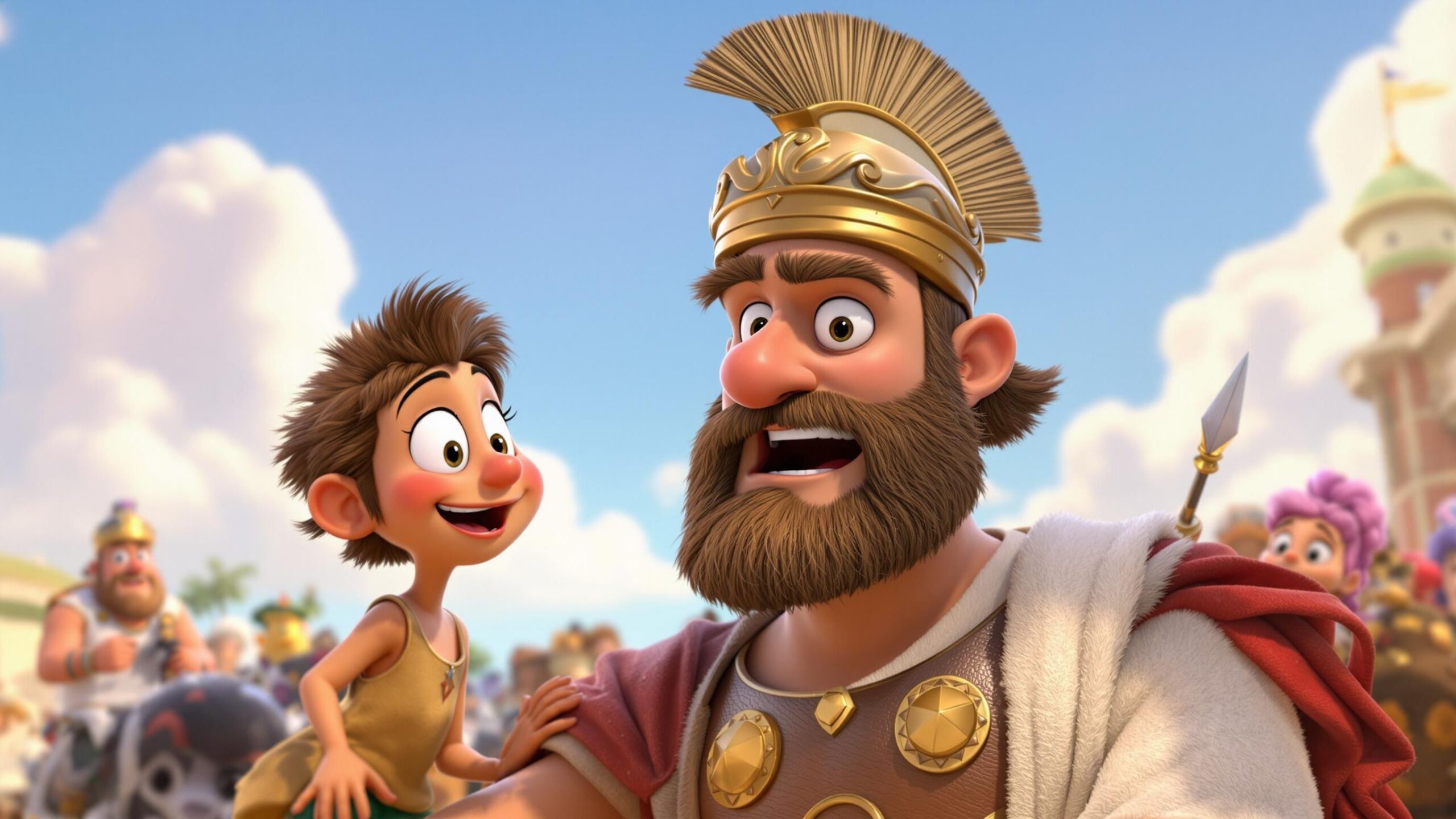A Boy Born to Conquer the World
In the cradle of Macedonia, in 356 BCE, a baby was born who would grow into a storm that swept through continents. Alexander the Great wasn’t just a king—he was a force of nature, a master of vision, and a commander whose tactics would ripple through history like thunder over the battlefield. From the moment he tamed the wild horse Bucephalus at just twelve years old, the world knew: this boy was not meant for ordinary things. He was destined to shatter empires and rewrite the rules of war. Tutored by Aristotle and raised on tales of Achilles, Alexander didn’t dream small. He believed he was touched by the divine and driven by destiny. But it wasn’t sheer confidence or royal lineage that carved his name into the bedrock of legend—it was his mind. His battlefield brilliance, his ability to outthink, outflank, and outfight enemies who far outnumbered him, made him more than just a warrior. It made him a military genius.
Thinking Like a Fox, Fighting Like a Lion
What made Alexander’s tactics so legendary was his ability to blend ruthless aggression with fluid adaptability. He didn’t charge blindly into battles. He studied terrain, calculated enemy weaknesses, and turned every limitation into an opportunity. He wasn’t bound by tradition or hampered by ego. If he had to fight uphill, in the desert, across rivers, or deep in enemy territory, he did so with the elegance of a chess grandmaster and the ferocity of a lion. In every campaign, he evolved. Where others repeated stale maneuvers, Alexander innovated. Where others hesitated, he attacked. He understood that warfare wasn’t just about swords and shields—it was about surprise, deception, and speed. He moved faster than news could travel. His armies were often outnumbered but never outfought. And he led from the front, where arrows flew and blood soaked the dust. To his men, he was invincible. To his enemies, he was inevitable.
The Hammer and Anvil: A Tactical Masterpiece
One of Alexander’s greatest contributions to military strategy was his refinement of the “hammer and anvil” technique. Imagine the enemy army as a slab of steel. Alexander’s phalanx—those disciplined, spear-wielding infantrymen—formed the anvil, holding the enemy in place with an unyielding wall of death. Then came the cavalry—the hammer—led by Alexander himself, crashing into the enemy’s flanks or rear with terrifying precision. The result? Devastation. At the Battle of Gaugamela in 331 BCE, Alexander used this tactic to perfection. Facing King Darius III of Persia, whose army outnumbered his more than two to one, Alexander launched a dazzling flanking maneuver, punching through the Persian lines like a lightning bolt. Darius fled in panic, and the once-great Persian Empire crumbled like sand under siege. It wasn’t just a win—it was a masterclass in tactical brilliance.
Terrain as a Weapon: Turning Landscapes into Allies
Where other generals saw deserts, rivers, and mountains as obstacles, Alexander saw opportunity. In the narrow passes of the Battle of the Granicus, he neutralized a heavily fortified Persian army by launching a surprise river assault. In the deserts of modern-day Iran, he marched his troops across deadly terrain with limited water, breaking expectations of where a force could operate. At the Siege of Tyre, when an island fortress seemed untouchable, Alexander had a causeway built across the ocean floor to bring his siege engines to the enemy’s doorstep. Yes, he built a road through the sea. Just because he could. He weaponized geography. He didn’t adapt to it—he made it bend to his will. Mountains, rivers, coasts, cities—all became pawns on his warboard. His enemies were constantly outmaneuvered not just by his troops, but by the very land beneath their feet.
Psychological Warfare: Beating the Mind Before the Sword
Alexander understood something many modern generals still struggle with: war is as much psychological as it is physical. He didn’t just defeat armies—he shattered morale. His reputation preceded him like thunder before a storm. Villages surrendered at the sound of his name. Enemy kings crumbled when they heard he was coming. At times, he used deception to create fear. He would build enormous campfires to make his army seem larger than it was. He’d march troops in circles in the desert to give the illusion of greater numbers. Before battles, he’d parade his elite cavalry in choreographed displays of power. He wanted the enemy to feel beaten before the first clash of steel. And it worked. Time and time again, he unraveled opposition not just with tactics, but with terror.
Blitzkrieg Before Blitzkrieg: Speed as Strategy
Long before tanks and airplanes brought speed to the battlefield, Alexander used rapid mobility as a weapon of war. His army moved with such speed and discipline that it often arrived before the enemy knew it was coming. He reduced reaction time to zero, striking with such immediacy that commanders couldn’t even form proper defenses. His logistics were streamlined. His men were trained to move light and fast. He could dismantle a camp, march for days, and still arrive with full battle readiness. He outpaced communication. He shattered sieges in weeks that were expected to last months. His campaigns weren’t just wars—they were lightning storms. This speed allowed him to conquer over 20,000 miles of territory in just over a decade. From Greece to Egypt, from Persia to India, he forged an empire so fast and vast it defied belief.
Unity in Diversity: Embracing the Multinational Army
Unlike many kings who viewed foreign soldiers with suspicion, Alexander welcomed them. He integrated Persians, Egyptians, and other conquered peoples into his army, even training them in Macedonian tactics. He understood that true power came from unity, not purity. At the Battle of Hydaspes in India, he faced King Porus and his massive war elephants. Rather than recoil at the unfamiliar, Alexander adapted. He studied the beasts’ weaknesses, instructed his men to avoid their tusks and legs, and attacked with archers and mobility. He even used the river and monsoon rains to mask his movements. The result? Another stunning victory—and another confirmation to his openness to learning. He wasn’t just building an army. He was building a civilization.
Leading from the Front: The Warrior King
Alexander didn’t sit on a throne barking orders. He wore the same armor, slept in the same dust, and bled the same blood as his men. He took wounds to the chest, the leg, the neck. At the Siege of Malli in India, he was one of the first over the wall, leading an assault so daring he was nearly killed. But in doing so, he became immortal in the eyes of his soldiers. They didn’t just fight for him—they followed him into the jaws of death. His presence electrified the battlefield. When he was wounded, men fought like madmen to retrieve him. When he rode, they charged with thunder in their hearts. His leadership wasn’t built on command—it was built on camaraderie, courage, and a shared destiny.
The Tactical Legacy: Lessons for the Ages
What makes Alexander’s military genius so profound is that his strategies still echo in modern warfare. His use of speed, deception, psychological warfare, combined arms, and adaptive thinking has inspired generals from Caesar to Napoleon to Eisenhower. Military academies still study his campaigns. His tactics are taught not as relics of antiquity, but as living lessons in leadership and ingenuity. He was not flawless. His ambition was boundless, and his methods could be brutal. But his battlefield mind remains unmatched. He understood that war was not won by numbers—it was won by nerve, by nuance, by knowing when to press and when to pause.
When the Sword Becomes a Pen: Spreading Ideas Through Conquest
Alexander wasn’t just building an empire—he was spreading a worldview. As he moved east, he founded cities, encouraged intermarriage, and introduced Hellenistic culture into the farthest reaches of Asia. His tactics weren’t limited to the battlefield. He conquered minds and merged civilizations. He saw beyond borders and beyond battles. He envisioned a connected world centuries before globalization had a name. That vision was part of his genius. He didn’t see conquest as destruction—he saw it as creation. And that vision helped sustain his empire far beyond his lifetime.
The Final Campaign and the Edge of the World
By the time he reached the edge of India, Alexander’s men were exhausted. They had fought for over a decade, across climates, continents, and cultures. When they refused to go farther, Alexander made perhaps his wisest tactical move—he listened. He turned back. He respected their loyalty enough to not force their hand. Even in this, he showed adaptability. Knowing when not to fight is as important as knowing when to strike. And this choice, this moment of restraint, preserved the heart of his army.
The Genius Who Dreamed in Miles and Marched in Eras
Alexander the Great wasn’t born a god—but he certainly marched like one. He wasn’t merely a conqueror—he was a visionary tactician whose battlefield brilliance rewrote the art of war. He saw what others couldn’t. He did what others wouldn’t. His tactics were not just clever—they were revolutionary. From the phalanx formations to the dazzling cavalry charges, from psychological warfare to cultural integration, his every move pulsed with purpose. He turned empires into stepping stones, landscapes into weapons, and battlefields into blueprints of strategy. And while his empire eventually fragmented, his legacy did not. His military mind blazed so brightly that even two millennia later, his name is spoken with awe. Alexander wasn’t just great because he won. He was great because he changed how victory was achieved. He marched not just across the map—but into legend.




